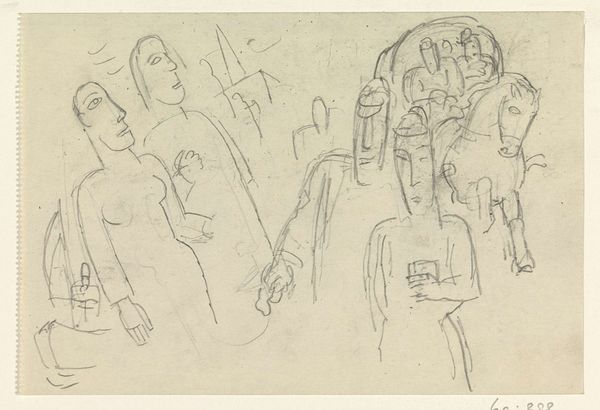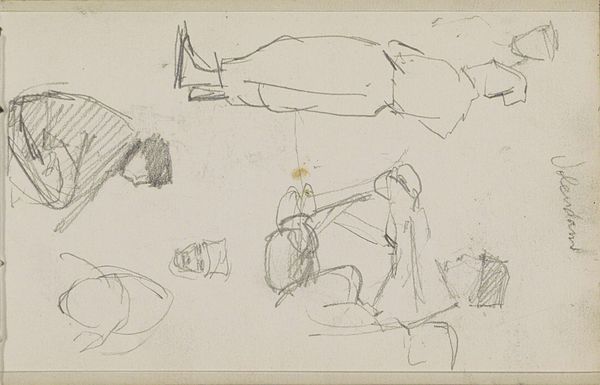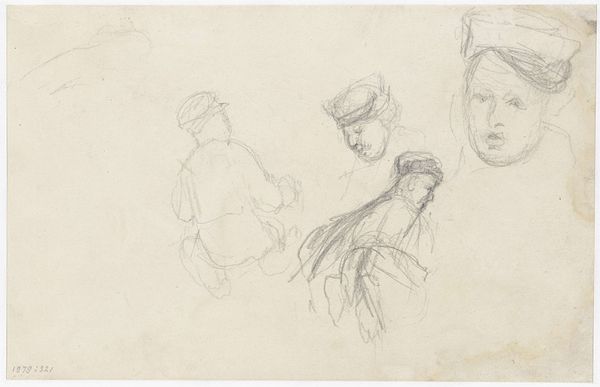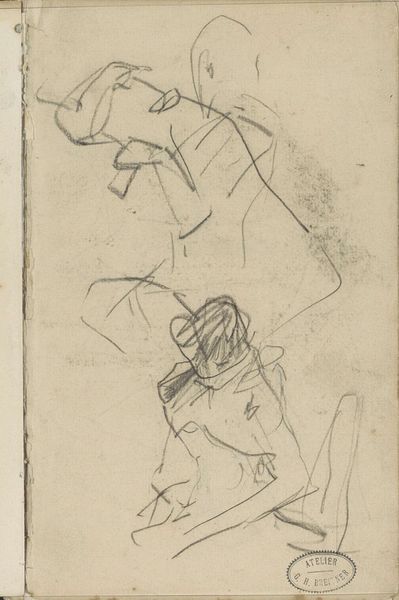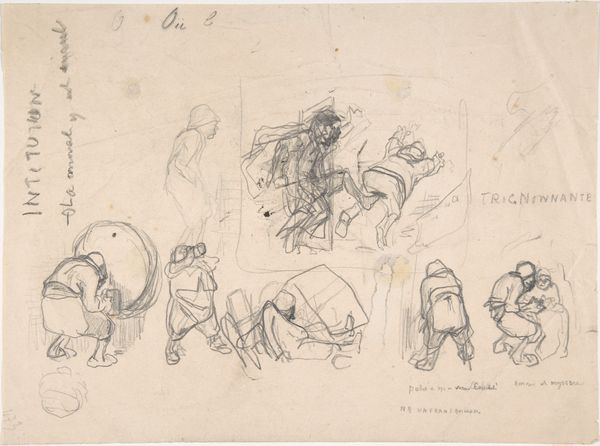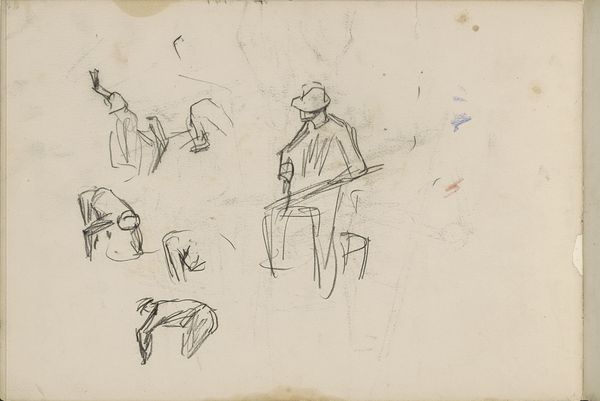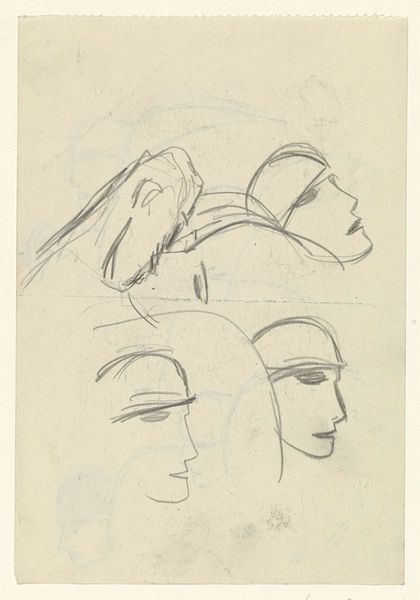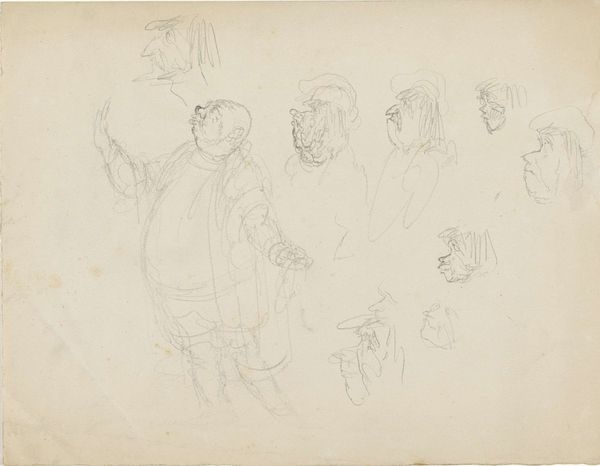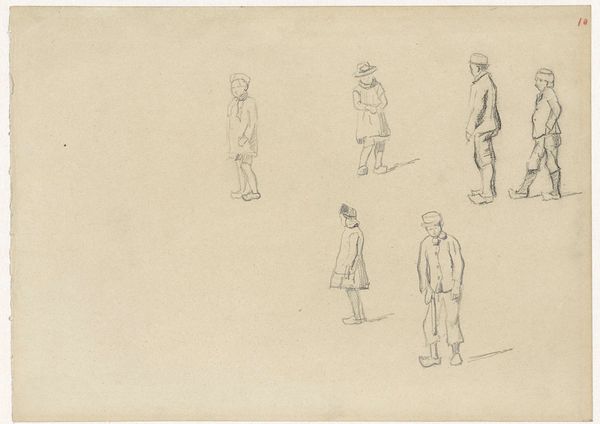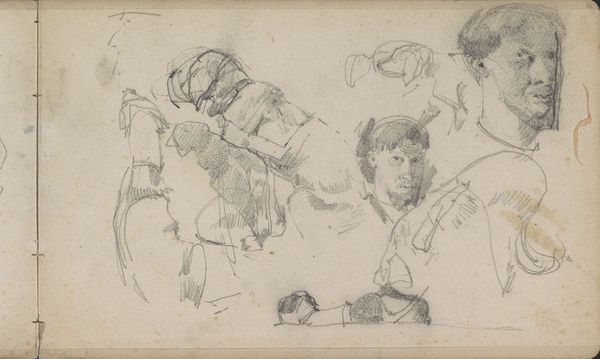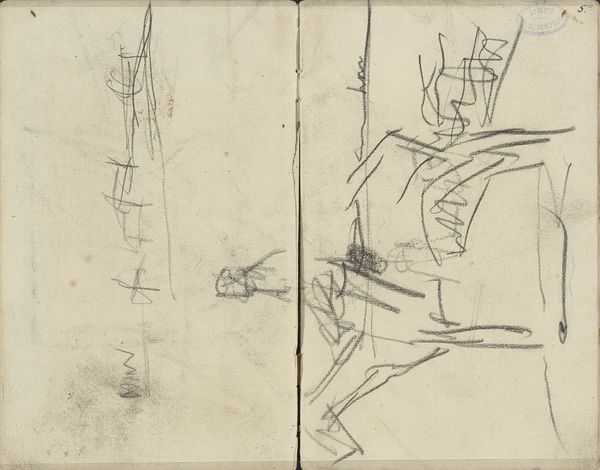
drawing, paper, pencil
#
portrait
#
drawing
#
figuration
#
paper
#
sketch
#
pencil
#
expressionism
Dimensions: height 104 mm, width 149 mm
Copyright: Rijks Museum: Open Domain
Curator: Right, let's discuss "Hoofden en figuren," or "Heads and Figures," a drawing by Leo Gestel, dating from between 1891 and 1941. It’s currently housed here at the Rijksmuseum. It’s done in pencil on paper, showcasing Gestel’s skill in capturing form through simple means. Editor: The immediacy of this sketch really grabs me. There’s a raw quality – the artist seems to be thinking through line and form in real-time, creating such emotionally detached and eerie figures. It's so stark. Curator: I'm particularly interested in the materiality here. Look at the paper, the type of pencil used; these choices reflect more than artistic preference; consider the accessibility of materials to artists during the period. What narratives about artistic labor do they imply? These decisions shape the viewing experience just as much as the depicted figures do. Editor: That’s true, and contextualizing Gestel’s work in those turbulent periods sheds light on possible social commentaries embedded here, too. Given the themes of representation—or misrepresentation—of bodies throughout this era, and thinking about Expressionism as a larger movement. Can we interpret these stylized figures as resistance, a rejection of dominant portrayals? Curator: That's a rich point. Focusing on material constraints and the artistic processes challenges notions of inherent artistic genius. For example, the lack of detail suggests an urgency, possibly limited resources which shifts our understanding from sublime artistry towards lived artistic conditions and available technology in mark-making. Editor: I agree. Analyzing art as a product of societal structures is essential. I can’t help but wonder if this relates directly to emerging identity and expression at the turn of the century in light of all that social and political reform. Do these undefined, perhaps anxious faces embody feelings of change and struggle for some kind of place? Curator: Seeing this sketch through the lens of materiality and production values provides an intimate view on the daily conditions under which artwork gets created. Editor: Considering both individual and cultural context makes artwork accessible on deeper, even uncomfortable levels.
Comments
No comments
Be the first to comment and join the conversation on the ultimate creative platform.
